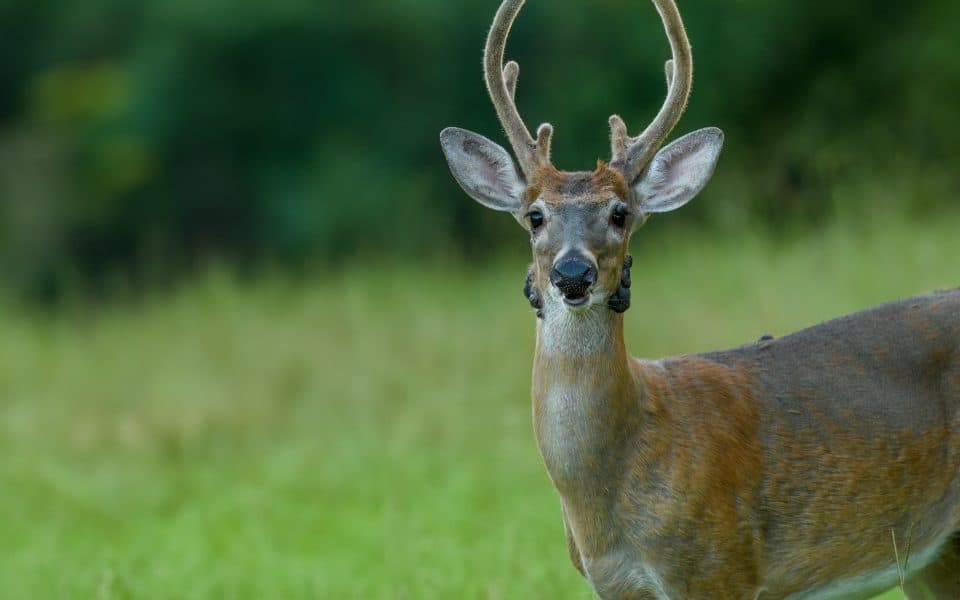Hunting season is finally here! If you are like us, the past three to four months have crept by while you stare at the calendar longing for cooler temperatures and hunting opener. At the MSU Deer Lab, with hunting season comes questions. We get a great number of emails every fall and winter with pictures of deer at the skinning shed. The title of these emails is typically “what’s wrong with my deer?” Below, we are going to describe the most frequent whitetail deer anomalies caused by either disease or parasites that we get questions about. More than likely, if you handle a few deer this fall you will see one or more of these.
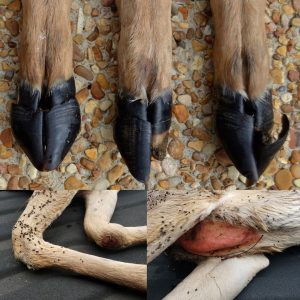
MSU Deer Lab
Epizootic Hemorrhagic Disease (EHD)
also known as bluetongue, is caused by a group of viruses spread by biting midges, or gnats. These viruses can kill up to 50% of a deer herd (as seen in the Midwest), but more commonly, mortality rates are less than 15%. In the Deep South, mortality rates may be less than 5%. Some deer die within a few days of exposure, some live for a few weeks before succumbing to the virus, and others are relatively unaffected by the virus.
Deer populations in the southern U.S. are confronted with these viruses much more frequently than their northern counterparts and have developed some immunity, while deer populations in northern latitudes may only encounter the disease every five to ten years and suffer much higher mortality rates. Deer that die from EHD are commonly found near creeks, rivers and ponds because the diseased animals experience very high temperatures and want to cool their bodies down.
Deer that contract the virus, but don’t die from the disease, usually fully recover but often show external signs in their hooves. Damaged, broken or cracked hooves are a sure sign the deer contracted EHD. Many hunters report seeing abrasions on a deer’s front “knees” and “chest,” this is because the hooves are so tender and difficult to walk on that deer will actually push their bodies on the ground or try to walk on their knees. The good news if you harvest a deer with these signs is the meat is perfectly fine to eat. Just remember, this is a very common disease and over your hunting career you may see one of these animals at the skinning shed.
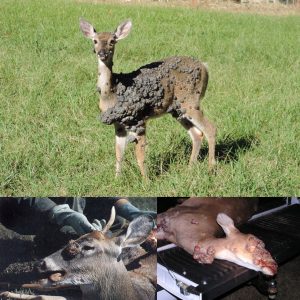
Cooperative Wildlife Disease Study
Cutaneous Fibromas
Cutaneous fibromas are commonly found on the skin of deer and are simply warts. My very first deer had three fibromas on its shoulder, so I became aware of this condition at an early age. The fibroma may be very small, like the size of a grape, or as large as a softball. Most of the time there will be very few (if any) fibromas on a deer, but every once in a while the head or neck of the deer will be covered.
Although fibromas may look grotesque, they are contained on the skin of the animal and do not affect the meat. Fibromas are a result of virus spread by some biting insects and usually regress in six to eight weeks. Unless a deer has many large growths that affect how the deer sees, hears, walks or eats, the animal is not harmed by the fibromas. Indeed, it may look awful, but the deer is usually just fine.
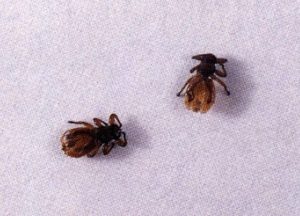
Southeastern Cooperative Wildlife Disease Study
Louse Flies
Louse flies are seen by just about everyone field dressing a deer. Have you ever noticed those little critters crawling around on a deer’s belly that you thought were ticks? Actually, those are louse flies, also called “deer keds.” You’re probably thinking how can that be a fly? – there’s no wings. Well, you’re exactly right. The adult flies have actually shed their wings. Many people think they are small ticks, but upon closer inspection, you will notice the louse flies only have six legs, not 8 legs.
The deer serves as a host during part of this parasite’s life stage. The wingless adult produces eggs, which grow to larvae and pupae and then fall off the deer. On the ground, the winged adult emerges from the pupa and searches for another deer to start the cycle over again. So, seeing louse flies on deer is completely normal and causes no damage to the meat.
Nasal Bots in Whitetail Deer
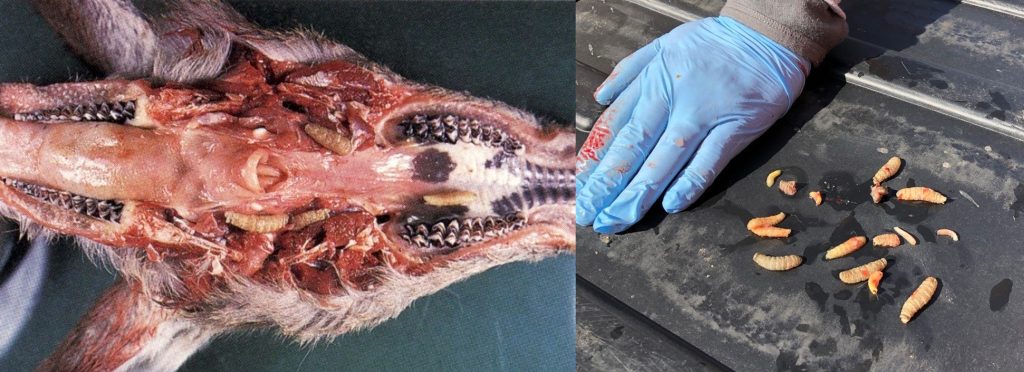
Southeastern Cooperative Wildlife Disease Study
Nasal bots are the larvae of flies in the genus Cephenemyia. Have you seen a deer during the summer that appears to be running and jumping around swinging its head back and forth? This could be a deer trying to avoid a bot fly. This pesky fly will actually use a deer as a host to incubate its larvae. The bot fly will land on the deer’s nose and quickly deposit eggs that migrate to the nasal cavity and begin to grow.
I’ve received many phone calls over the years describing how these “fat little worms” kept falling out of the deer’s mouth and nose while it was hanging upside down at the skinning shed. These are simply the larvae of the bot fly. Other than being extremely uncomfortable for the deer (imagine a stuffy nose for months!) the larvae pose no health risk to the deer and will naturally migrate out of the nasal cavity when mature. The venison is perfectly fine to eat.
Arterial Worms
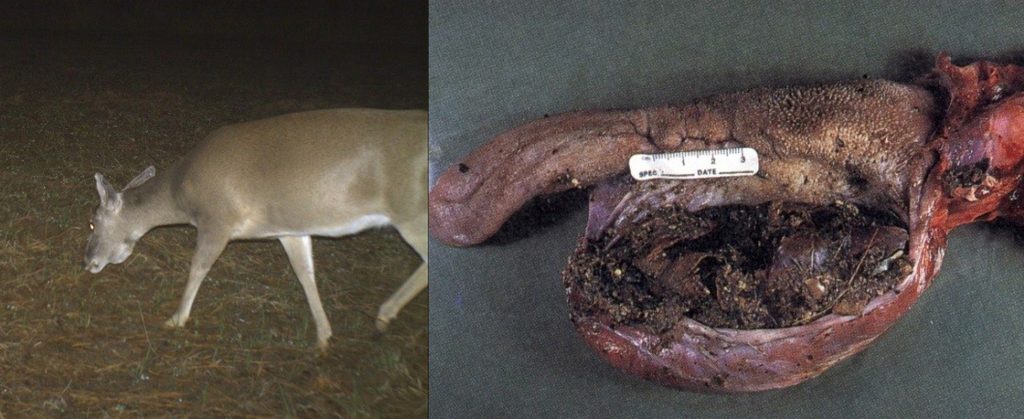
Southeastern Cooperative Wildlife Disease Study
Arterial worms are a nematode known to the scientific community as Elaeophora schneideri. I’ve only seen a few of these in my career, but I was reminded of this parasite while conducting a camera survey this past year. A symptom of this parasite is what appears to be a swollen jaw, or a mouth full of cud. So how does the arterial worm affect the jaw? Well, the worm lodges in the carotid artery and more or less clogs the artery and reduces blood flow to the jaw region. In turn, the jaw area becomes weak and often results in food compaction and sometimes tooth loss.
So how do these worms get inside deer in the first place? Larvae produced by the female worm will slowly migrate through the deer’s circulatory system and become ingested by horse flies while feeding on deer. The horse fly then feeds on another deer and the arterial worm larvae gets in to the bloodstream of their new host. The larvae grow to adult worms and the cycle begins again.
We hope this short review of common deer diseases and parasites will help you at the skinning shed this fall. These diseases and parasites are just the tip of the iceberg relative to all the maladies that white-tailed deer encounter and have adapted to live with, but these are the ones you most likely see.
Learn more from the Gamekeeper Podcast EP:195 | What’s Wrong With My Deer!?!? Disease or Abnormality?

Join our weekly newsletter or subscribe to GameKeepers Magazine.
Your source for information, equipment, know-how, deals and discounts to help you get the most from every hard-earned moment in the field.

